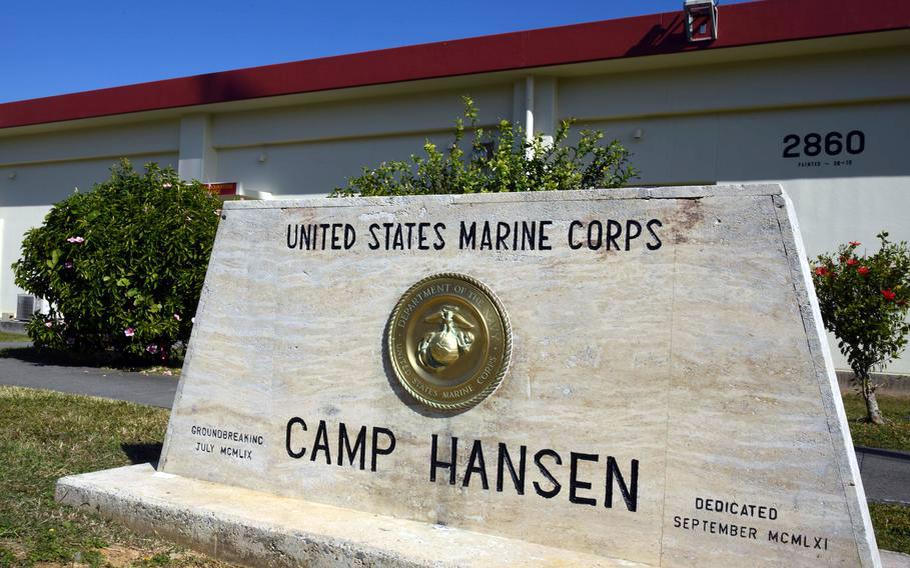
Camp Hansen is a U.S. Marine Corps base in the town of Kin, Okinawa. (Frank Andrews/Stars and Stripes)
CAMP FOSTER, Okinawa — The mayor of Kin town, home of the Marine Corps’ Camp Hansen in central Okinawa, wants a formal inquiry into the source of toxic PFAS chemicals found in local water.
The town’s environmental division discovered elevated levels of PFAS in five of 14 sites sampled near Camp Hansen in November, a town spokesman told Stars and Stripes by phone Monday.
The highest levels were found downstream of an industrial waste site where U.S. military waste was also deposited.
“As the mayor said, we will keep requesting that the government conduct further research to find the reasons and solutions,” the spokesman said. “We don’t know where the contamination comes from.”
However, the Okinawa Defense Bureau does not plan to request or conduct PFAS testing on the island’s U.S. military installations at this time, a spokesman said Monday. The defense bureau is an arm of Japan’s Ministry of Defense.
“There is no clear evidence that the contamination comes from the base,” the bureau spokesman said. Some government officials in Japan speak to the media on condition of anonymity as a requirement of their employment.
PFAS is short for per-and polyfluoroalkyl substances, which includes the organic compounds PFOS and PFOA. The Environmental Protection Agency refers to them as “forever chemicals” because they persist in the environment and are difficult to eradicate.
Some manufacturers have stopped using them, but PFAS is common in nonstick coatings and in firefighting foam of the type commonly used on military bases, where its use in Japan is being discontinued.
The effects of PFAS contamination in humans are uncertain, according to the Centers for Disease Control and Prevention. Animal studies indicate PFAS may affect reproduction, thyroid function, the immune system and damage the liver.
Contamination has become a major point of concern on Okinawa where U.S. air bases have used the firefighting foam.
Kin began annual water sampling for PFAS in 2019, the town’s spokesman said.
The environmental division tested treated wastewater at Hansen; from two points around a former repository for industrial waste in the Yaka district; from three points around Ryukyu University Hospital; from a small stream in Yaka; and from the Okukubi, Ishikawa, Kura, Ukkaga, Kitaga and Nakouga rivers.
Elevated levels were found at five points around the hospital and the unnamed industrial waste repository, according to the results posted on the Kin town website in April.
The highest levels – 780 nanograms per liter, or 300 nanograms per liter of PFOS and 470 nanograms per liter of PFOA – were detected at the waste disposal site, the website said. That is more than 15 times Japan’s provisional safe drinking water standard of 50 nanograms per liter.
The second highest level — 140 nanograms per liter — was recorded upstream of the disposal site.